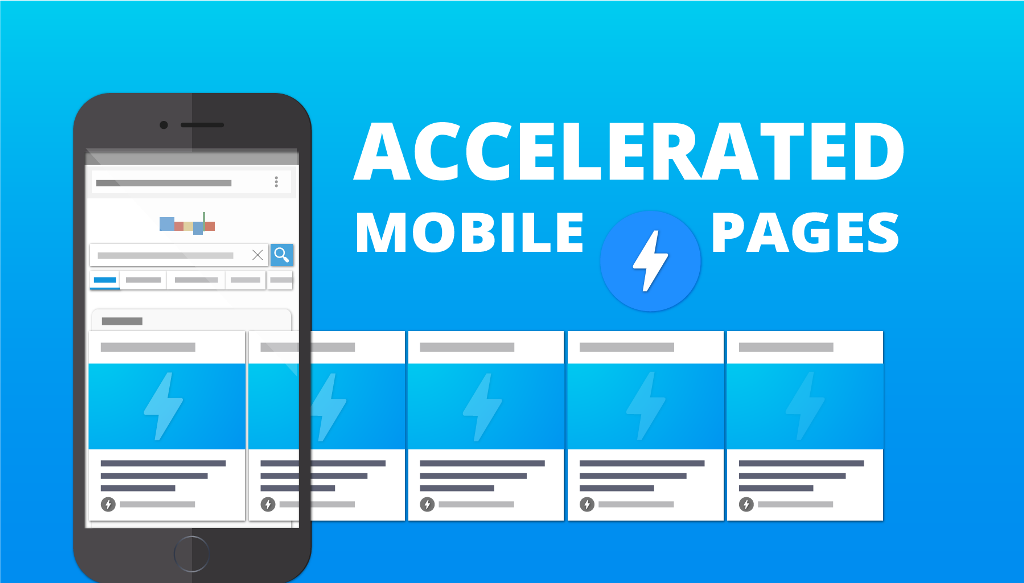Statistics suggest that most of the google searches come from mobile devices; the number is more than 52 percent. People search for news, stories, and other life-related content that can bring them solutions to their problems. Another data suggests that more than 40% of the visitors bounce off a webpage that takes more than 3 seconds to load.
To bring this problem a solution, Google introduced a Project called the Accelerated mobile pages or AMP. Some marketing experts suggest that the AMP can be a ranking factor for your website. Is this suggestion true in real life? Do they worth it to have AMP pages on your website? Let’s find out.
What is AMP anyway?
Whenever you search for news or something else, there is a lightning bolt sign beside a post link as a search result. Have you ever thought it through that why that sign is there, and why does it say AMP?

Well, that’s the reason why that page is instantly opened up as you click on that link without even loading. It’s called Google AMP or Accelerated mobile pages, which Google launched in October 2015. AMP has preloaded the page for you so you can click and get the content without waiting to load up.
How does it work?
The AMP is a narrowed-down HTML page that has minimal reasons to delay the loading time of a webpage. It’s called Accelerated Mobile Pages because it preloads the pages under the hood for the visitors. The page doesn’t take the time of loading that a regular webpage would take. While designing a webpage with Google AMP, you need to use the HTML file following the AMP documentation.
You cannot use any tag or element you want in both the HTML file nor the CSS file. There are certain restrictions while designing an AMP webpage on your site. The CSS file must be inline version, not a regular decorated one. You canno use any third party JS file in the AMP webpage as well. The AMP framework has its own JS library that you can use on the page to bring the functionalities.
Why is Google AMP important?
It’s okay if you are in doubt that the AMP can bring any drastic positive impact on your site. But think about it, did you notice that Facebook and Apple both launched their own versions of Google’s AMP even before google itself? Let me give you an insight into what happened and how these tech giants took the fact seriously:

- Facebook launched the Instant Article to its website in May 2015 for the first time. This feature brought Facebook a drastic change and a huge potential for smart revenue.
- Apple launched the Apple News feature for its mobile visitors to load the articles instantly in June 2015. Similarly to Facebook, it came with a positive impact on the company.
- Following the two tech giants, Google also launched the AMP (Accelerated mobile pages) in October 2015. As we know Google as the biggest tech giant in the industry, it came with a huge potential for the websites that use the service from google.
The fact of bouncing of mobile users on the pages with slow-loading time has a bad impression on your site. There are some limitations on both the ends of visitors and the site itself. A webpage can take 8 seconds to load, which takes only a second to load on a computer screen. You can take off the limitations and make an AMP website to give your visitors a fast-loading experience. A fast-loading page always brings satisfaction to a visitor and makes him loyal, which eventually drives your revenue and authority.
Does AMP help with SEO in ranking factors?
Some marketing experts suggest that Google AMP affects the SEO of your website and drive better traffic and revenue. The question here is if this true at all. Especially When Google itself says that AMP doesn’t have any impact as a ranking factor? If you are a publisher online and you want to have a push for climbing top of the SERP, AMP does help you a little.
The AMP project was started its journey dedicated to the publishers. It will bring the search results on top if you don’t have any other problem climbing the numbers. If you’re using WordPress, you can easily optimize the webpages with AMP associating with Yoast. The process is really short and simple, especially if you have the Yoast SEO already installed on the dashboard.
How do you use AMP?
As I mentioned earlier, you cannot use all the regular HTML 5 attributes and tags while making an AMP website. You have to use an inline CSS file to cope with AMP. The CSS file cannot contain restricted attributes, such as forms. When it comes to JS, you cannot use any JS at all, but from the AMP library itself. Make sure you have them all in mind. If you are trying to use AMP on WordPress, it’s way simpler than it might sound once you start using. The process is simple and straight, and I’ll get you through it in a bit.

First of all, log in to your WordPress dashboard and navigate to the plugin option. Click to open up the plugin page, search, and install some plugins. First, install the AMP plugin, and you’re almost ready to publish any AMP webpage on your site. If you have Yoast on your site and care about SEO and Google AdSense integration, install two more Plugins. They are: “Glue for Yoast SEO & AMP” and “AMP for WP – Accelerated Mobile Pages.” These combined will give you the full accessibility to have a super-fast webpage that can get you both revenue and satisfaction of the visitors.
Bottom line
Using Google AMP can have a huge positive impact on your website if you optimize it with care. It’s hard to get Analytics on an AMP page, but the popular analytics are available now, including Amazon, Googe, and many more. You are also losing the ability to bring more functionality because you cannot use third-party JS. You can now generate Ad revenue as you want, following the proper procedure form Google Doubleclick, AdSense, AdTech, Amazon A9, AOL, and so on.




